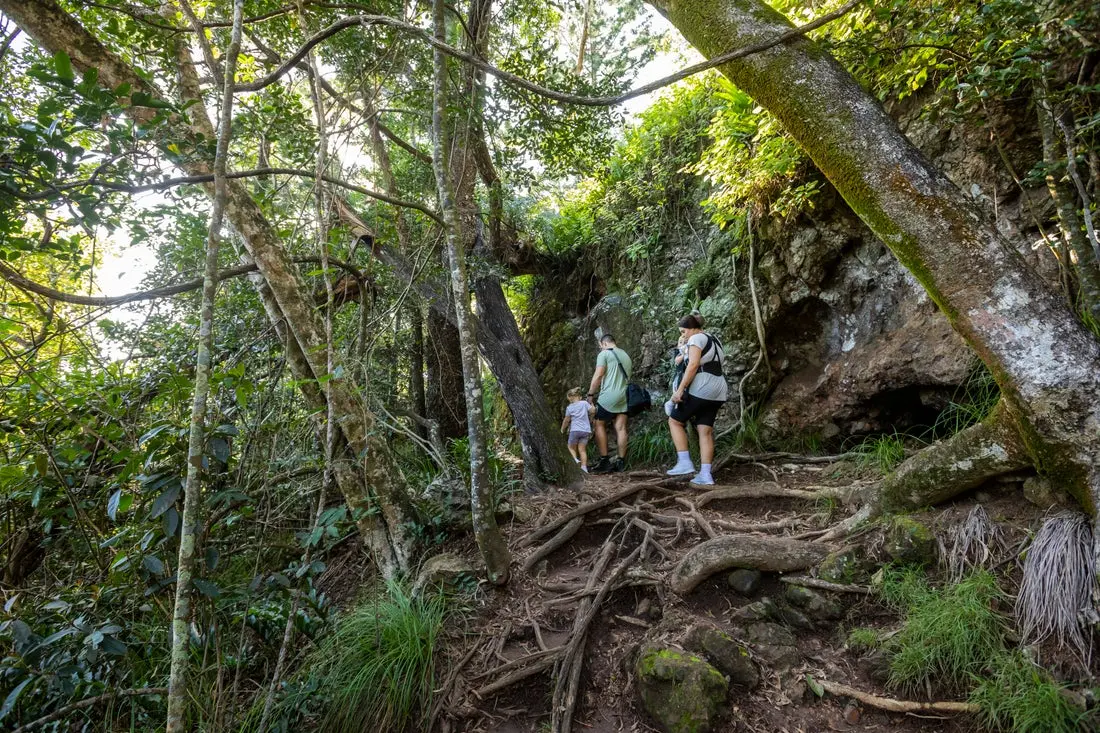
Cape Hillsborough vegetation
Our volcanic history and subtropical climate have given rise to incredibly diverse and abundant plant life – from mangroves and she-oak woodland to ironbark forests and ancient rainforests. Enjoy them from the comfort of your accommodation, or explore further on one of our lovely walks. Here’s your guide to the many ecosystems that make up Cape Hillsborough National Park.

Notophyll rainforest
Notophyll is a diverse rainforest filled with strangler figs, ferns, rattans and herbs, which usually grows on south-facing slopes. You’ll find it on the central plateau, north of our main access road and on the southern side of the Hidden Valley.
Hoop pine closed forest
Hoop pines are beautiful, towering trees that grow up to 50 metres tall. In Cape Hillsborough National Park, they grow on the eastern and northeastern sides of the central plateau, and on the north slopes of the Hidden Valley.
Brush box-ironbark woodland
Brush box-ironbark woodland keeps numerous bird species alive by providing nectar and pollen all-year-round. It grows on the national park’s hillsides, and, in a stunted form, on Wedge Island.
Paperbark-poplar gum woodland
Paperbark-poplar gum woodland usually features Moreton Bay ash trees, swamp mahogany and pink bloodwood. It thrives in low-lying alluvial soils, where the water table nearly reaches the surface, and in the lower reaches of waterways. Look out for it south of Smalley’s Beach and in one section of our main access road.
Sheoak-eucalypt low woodland or shrubland
Sheoak is a small, pretty drooping tree that is good at surviving droughts. Sheoak-eucalypt low woodland is common in our area, covering the whole of the central plateau.
Gully forest
This attractive ecosystem generally emerges in sheltered areas, near waterways. You’ll see on the bed of Cascade Creek and its tributaries.
Littoral rainforest
Littoral rainforest is an endangered ecological community, which is threatened by logging and overgrazing of animals. It grows just north of Smalley’s Beach.
Foredune forest
As the name suggests, this forest appears on dune ridges that run alongside the coastline. To experience it, visit the dunes behind Smalley’s Beach and the southern part of Wedge Island.
Mangroves and salt pan
Mangroves play many roles in looking after our environment – from physically protecting the coastline to providing food and shelter for fish, crabs and birds. They’re usually found in salty intertidal sand and mud. A diverse variety of mangroves are found throughout Cape Hills Cape Hillsborough National Park, with 20 of the 30 species that grow in Australia being represented. This is because we experience such large tides – up to 6.5 metres – which has produced distinctive tidal zones with extensive salt pans.
Beach sheoak woodland
This lovely, colourful ecosystem flourishes on beach fronts. You’ll find it in many parts of the park, especially where soils are shallow and slopes are exposed. There’s a range of flowering species, including acacia, banksia, callistemon and leptospermum.